The Hittites – Rise And Fall Of An Ancient Powerful Empire
Ellen Lloyd - AncientPages.com - The Hittites were once one of the most powerful ancient civilizations that occupied the ancient region of Anatolia.
This long-gone culture has greatly interested archaeologists and historians, but unraveling the truth about the Hittites has been difficult.
The Mysterious Language Of The Hittites
Although the civilization was over 4,000 years old, it was first in 1834 that a French scholar discovered ancient ruins that could be linked to the Hittites. Most ancient documents describing this culture, once a rivaling threat to the ancient Egyptian kingdom, were lost in the sand.
Most of the Hittites were illiterate and could not describe their daily lives. However, ancient clay tablets have shed more information on the Hittites. However, one of the problems scientists face when they attempt to decode the script is that many different languages dominated Anatolia during this historical period. The Hittites borrowed words and phrases from other languages, making it difficult for modern scholars to determine this ancient civilization's original roots.
Scientists now say that the mysterious language of the Hittites reveals the history of this ancient civilization is much more complex than previously thought.
This is a preview of our premium article available only to members of Ancient Pages.
Become a member to read more - Click here
If you are already a member and have logged in to your account, you can access the article here
See also: Ancient Pages Library Of Ancient And Unexplained Mysteries
More From Ancient Pages
-
 Heliopolis ‘Sun City’ Was One Of The Most Ancient Cities Of Egypt
Featured Stories | Oct 6, 2021
Heliopolis ‘Sun City’ Was One Of The Most Ancient Cities Of Egypt
Featured Stories | Oct 6, 2021 -
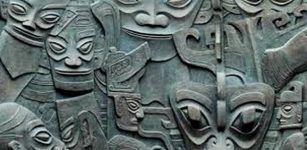 Baffling Sanxingdui Civilization: Why Did These People Have Fascination For Eyes?
Civilizations | Mar 21, 2017
Baffling Sanxingdui Civilization: Why Did These People Have Fascination For Eyes?
Civilizations | Mar 21, 2017 -
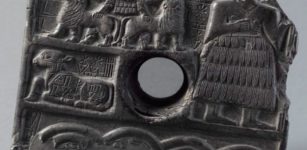 Votive Plaque Dedicated To Dudu High Priest Of God Ningirsu
Artifacts | Jan 16, 2017
Votive Plaque Dedicated To Dudu High Priest Of God Ningirsu
Artifacts | Jan 16, 2017 -
 Previously Uncounted Copies Of Newton’s Groundbreaking ‘Principia’ – Discovered
News | Nov 11, 2020
Previously Uncounted Copies Of Newton’s Groundbreaking ‘Principia’ – Discovered
News | Nov 11, 2020 -
 Anne Askew: Woman Of Great Courage, Strong Beliefs And Principles Who Was Arrested For Heresy, Imprisoned, Tortured And Burnt At The Stake
Featured Stories | Feb 15, 2019
Anne Askew: Woman Of Great Courage, Strong Beliefs And Principles Who Was Arrested For Heresy, Imprisoned, Tortured And Burnt At The Stake
Featured Stories | Feb 15, 2019 -
 Surprise! ‘Viking Ship’ Found On The Seabed Is Not What We Previously Thought And Rewrites Scandinavian Maritime History, Scientists Say
Archaeology | Mar 10, 2025
Surprise! ‘Viking Ship’ Found On The Seabed Is Not What We Previously Thought And Rewrites Scandinavian Maritime History, Scientists Say
Archaeology | Mar 10, 2025 -
 Neanderthal Hunting Camp Discovered In The Center Of The Iberian Peninsula
Archaeology | Aug 30, 2021
Neanderthal Hunting Camp Discovered In The Center Of The Iberian Peninsula
Archaeology | Aug 30, 2021 -
 How ‘Listening’ To Archaeological Sites Could Shed Light On The Past
Archaeology | Dec 8, 2023
How ‘Listening’ To Archaeological Sites Could Shed Light On The Past
Archaeology | Dec 8, 2023 -
 Chromium Steel Was First Produced In Ancient Persia
Ancient Technology | Sep 24, 2020
Chromium Steel Was First Produced In Ancient Persia
Ancient Technology | Sep 24, 2020 -
 Ancient Mesoamericans Drank Tobacco In Healing Rituals – Ceramic Vases From Cotzumalhuapa, Guatemala Reveal
Archaeology | Mar 6, 2024
Ancient Mesoamericans Drank Tobacco In Healing Rituals – Ceramic Vases From Cotzumalhuapa, Guatemala Reveal
Archaeology | Mar 6, 2024 -
 Lost Laodicea Temple And Seleucid Relics – Archaeological Search Continues
Archaeology | Jun 29, 2020
Lost Laodicea Temple And Seleucid Relics – Archaeological Search Continues
Archaeology | Jun 29, 2020 -
 Trolls – Fascinating Mythical Creatures Of Scandinavia
Featured Stories | Jun 13, 2022
Trolls – Fascinating Mythical Creatures Of Scandinavia
Featured Stories | Jun 13, 2022 -
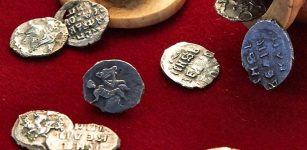 Silver Coins Hidden In Chess Figure Date Back To Ivan The Terrible’s Days – Discovery In Moscow
Archaeology | May 13, 2017
Silver Coins Hidden In Chess Figure Date Back To Ivan The Terrible’s Days – Discovery In Moscow
Archaeology | May 13, 2017 -
 Fossil Of Extinct Human Species Reveals Climate Change Led To Unexpected Anatomical Changes 2 Million Years Ago
Archaeology | Nov 11, 2020
Fossil Of Extinct Human Species Reveals Climate Change Led To Unexpected Anatomical Changes 2 Million Years Ago
Archaeology | Nov 11, 2020 -
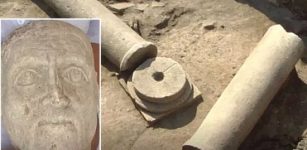 Third-Century Sculpture Of Roman Emperor Aurelian Unearthed In Bulgaria
Archaeology | Sep 5, 2018
Third-Century Sculpture Of Roman Emperor Aurelian Unearthed In Bulgaria
Archaeology | Sep 5, 2018 -
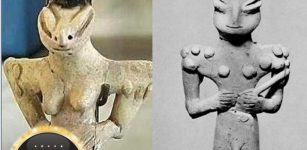 Ancient Reptilian-Like Humanoids Hold Secrets Of Mankind’s Origin
Ancient Mysteries | Apr 12, 2014
Ancient Reptilian-Like Humanoids Hold Secrets Of Mankind’s Origin
Ancient Mysteries | Apr 12, 2014 -
 Skeletal Remains Of A 1,500-Year-Old Byzantine Ascetic Monk, Chained In Iron Rings – Uncovered Near Jerusalem
Archaeology | Jan 4, 2023
Skeletal Remains Of A 1,500-Year-Old Byzantine Ascetic Monk, Chained In Iron Rings – Uncovered Near Jerusalem
Archaeology | Jan 4, 2023 -
 Queen Dido Of Carthage: Founder Of Prosperous City On Africa’s Northern Coast
Featured Stories | May 21, 2020
Queen Dido Of Carthage: Founder Of Prosperous City On Africa’s Northern Coast
Featured Stories | May 21, 2020 -
 Well-Preserved Warring States Period Swords And Cultural Relics Discovered In Xiangyang, Hubei
Archaeology | Apr 5, 2024
Well-Preserved Warring States Period Swords And Cultural Relics Discovered In Xiangyang, Hubei
Archaeology | Apr 5, 2024 -
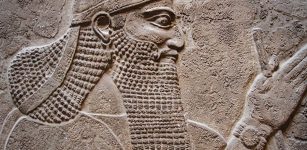 Unexpected Discovery Of 600 B.C Assyrian Palace In Shrine Destroyed By Isil Militants
Archaeology | Mar 2, 2017
Unexpected Discovery Of 600 B.C Assyrian Palace In Shrine Destroyed By Isil Militants
Archaeology | Mar 2, 2017



